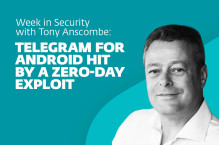Some of you may not be too surprised that I'm not always comfortable with the sort of crystal ball gazing that everyone seems to want at this time of year. It's not coincidental that I often quote Daniel Delbert McCracken's advice “Don’t make predictions about computing that can be checked in your lifetime.” (A tip of the hat to my friend Rob Slade for drawing my attention to that quote, years ago.)
Still, when I came to put together my regular article for Security Week, I found myself thinking about why top tens and prognostication is so popular, and surprised myself by coming to quite a positive conclusion about the value of security soothsaying as a way of preparing for possible (or even, hopefully, likely) futures by extrapolating from the present. Just as well, I guess, as I've been quoted quite widely in that sort of context this year.
If you haven't yet had enough of the crystall balls that have been bouncing all over the media and the blogosphere in the past few weeks, our research teams from San Diego and Latin America joined forces (as we often do at this time of year) to exchange thoughts on what the threat landscape is likely to look like in 2011, and you can find that included in the December/End of Year ThreatSense report at http://www.eset.com/resources/threat-trends/Global_Threat_Trends_December_2010.pdf. My colleagues in Latin America have also generated a much more comprehensive document which has just gone up on the white papers at http://www.eset.com/documentation/white-papers, and that's well worth reading.
David Harley CITP FBCS CISSP
ESET Senior Research Fellow




